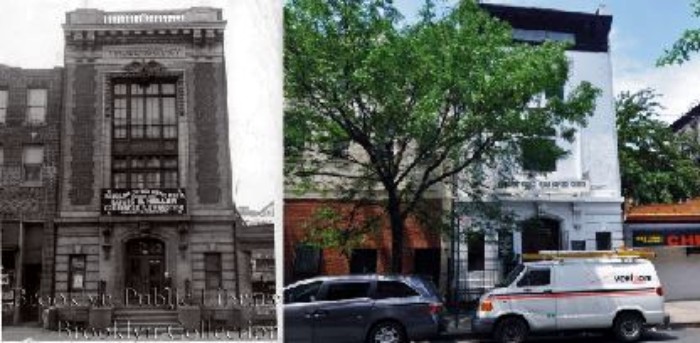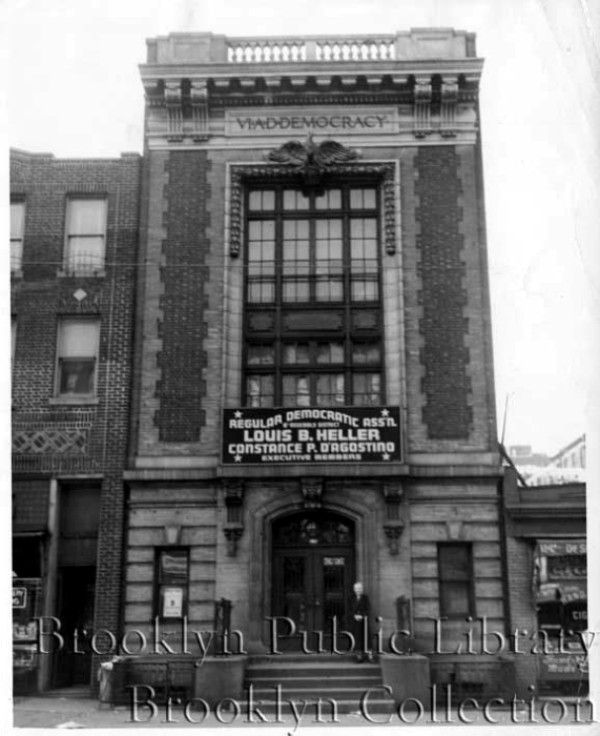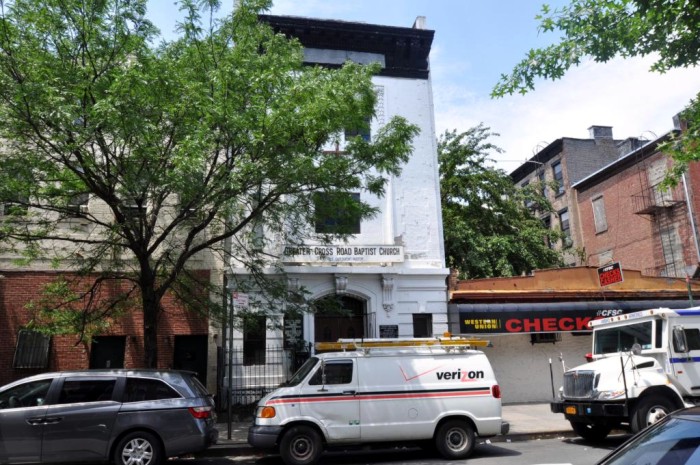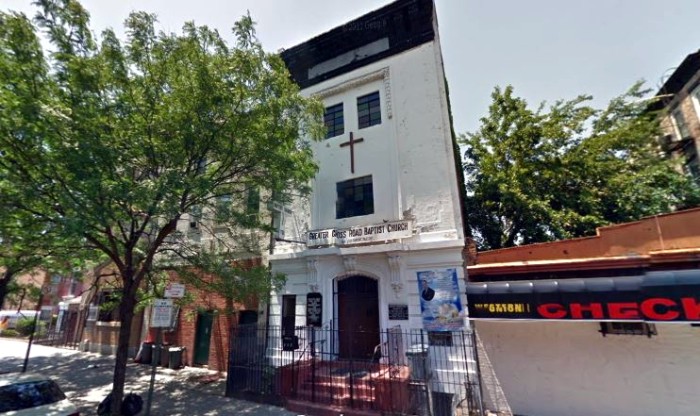Past and Present: The 6th Assembly District Democratic Club
A look at Brooklyn, then and now. “I wonder what that was.” It’s easy to ask that question while wandering around the city. Buildings change their function all the time. Civic buildings and clubs become often become houses of worship as neighborhood demographics and communities change. It’s easy to see why; they are often large,…


A look at Brooklyn, then and now.
“I wonder what that was.” It’s easy to ask that question while wandering around the city. Buildings change their function all the time. Civic buildings and clubs become often become houses of worship as neighborhood demographics and communities change. It’s easy to see why; they are often large, with open, assembly hall-type spaces perfect for congregations to gather in, ideal for a gathering of anywhere from a few dozen to hundreds of people, depending on the congregation or the space. Clubs, especially, come and go, and often need to raise money to pay debts or relocate, sometimes selling cheaply, making it a win-win for a religious organization to take over the space.
Today’s building was built in 1904 through 1905 for the 6th Assembly District Democratic Association. It is at 116 Tompkins Avenue, near Myrtle Avenue in Bedford Stuyvesant. The cornerstone was laid in June of 1904, and the Association had their grand opening the following February. The decades previous to this opening had been a busy one for the organization, as the 6th A.D. grew in population and political strength, as Tammany Hall tried to take over Brooklyn Democratic politics. The district covered much of the old Eastern District, with parts of Bedford, Bushwick, and Williamsburg falling within its borders.
Most political associations at the time were organized around powerful and charismatic politicians, local leaders who could command an almost cult-like club of personality around them. They were, in turn, nurtured by the larger political party. A good Assembly District leader who could bring votes to the party was in an excellent position to bring good things to his constituents, as well as a lot of goodies for himself. Staying in power was a daily struggle that went beyond merely getting votes.
The 6th A.D. Democrats were led by a man named William R. McGuire. He had been leading the A.D. since the 1880s. He was not the Assemblyman for the district, but was the leader of the Democratic club behind the Assemblyman, the local leader of the Machine, as it were. McGuire was actually the Water Registrar, an appointed post in which he was responsible for issuing and collecting the water and sewer bills for the city of Brooklyn, a pretty powerful position.
The opening of this fine new club was hailed in the papers with great descriptions of the facilities. The building had an auditorium, game rooms, including a billiard room and basement bowling alley, dining facilities and a kitchen, as well as a library, office space, bathrooms, etc. Unfortunately, the name of the architect was never mentioned. The building of the club was paid for by fund raising activities, and they had a mortgage, as well.
When the new club opened in February of 1905, it was called “McGuire’s Democratic Club” by almost one and all, including the press. Mr. McGuire announced at the grand opening that he would be stepping down from his leadership position shortly. This news started a power struggle that continued for several years, with McGuire finding himself vigorously defending his turf until that time he chose to give it up. Every move he made began to be a contentious event, even a planned ceremony to celebrate paying off and burning the mortgage.
The club survived, however, and was in use until the 1950s. As women began to get more involved in politics, especially after getting the vote, Democratic women’s clubs met here as regularly as men’s activities. The club stayed in the political news until it closed, which seems to have been in the late 1950s or early 1960s. The building may have passed to another club before becoming the New Testament Church of God in 1966. They sold the building to the Greater Crossroads Baptist Church in 1984.
From the 1946 photograph in the collection of the Brooklyn Public Library, we can see a very handsome civic building worthy of any club. “VI. A. D. Democracy” (the first letters perhaps referencing the building being begun in 1904?) is carved on a frieze below the cornice. A large bronze eagle perches on olive branches draped over the large double story central bank of windows. Decorative brick quoins surround the windows and the sides, and large brackets support the shelf lintel over the elegant doorway. It’s a very impressive building, especially for a relatively small political club.
When the building became a church, they frankly took all of the charm out of it. They removed or just covered up the “Democracy” frieze, got rid of the eagle, and most egregiously, filled in the large elegant windows and stuccoed over the decorative brick. They also changed the original doors and painted the whole building white. The church is now one of several storefront churches on this block, the nicest to be sure, but they had a lot to work with. The building is now a forgotten, but important part of the history of this ever-changing neighborhood. GMAP



Related Stories
The Bikers, Singers, Athletes or Riders? Which Long-Gone Social Club Would You Join?
Past and Present: The Apollo Club of Brooklyn
Past and Present: The Crescent Athletic Club, Bay Ridge





What's Your Take? Leave a Comment